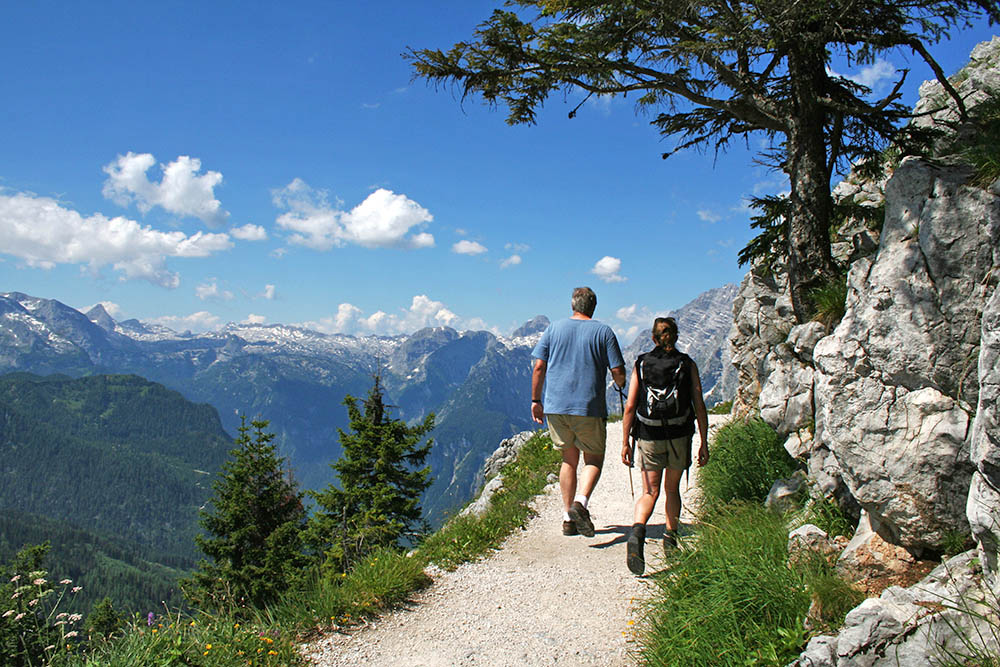Hiking and mountaineering
Hiking in Berchtesgaden National Park has many faces: some prefer a leisurely stroll through the valley, while others seek the challenge of a high mountain peak.
The Berchtesgaden National Park offers a varied network of 260 km of hiking trails and alpine paths - there is something for everyone. The hiking trails are divided into the categories barrier-free, easy, medium and difficult. Maps for route planning are available at the national park information points, in bookshops or online.

The hiking trail network in the national park

Tips for a safe and unforgettable stay
- Be sure to tailor your excursions to your personal ability and to the weather and daylight conditions
- Make sure you wear sturdy footwear and take rain protection, warm clothing, drinks and sufficient food with you
- Pay attention to current conditions in the terrain - the weather can change very quickly in the mountains
- Rely on detailed maps and signposting in the terrain when planning your route and orientation
- For longer tours and on more difficult paths, a head for heights, surefootedness and good physical condition are essential
- In winter, always pay attention to the avalanche report
- Follow the rules - this way you can make a valuable contribution to the protection of nature and a great experience for everyone!
Under “Safety in the high mountains” we have compiled some additional information for you on how to be safe in the National Park and under “Accessibility of the trails” you will find current closures.
Tour suggestions
Please note that the difficulty ratings may differ depending on the tour portal. The evaluation criteria of the tour portals usually refer to the distance/calculated walking time of the tour, the altitude difference and the technical difficulty based on the SAC hiking scale. Therefore, in addition to the tour data (e.g. length, altitude), please also give priority to the signposts in the terrain.
These refer to the difficulty of the individual sections of the trail and, in contrast to the tour portals, are based on the following categories:
- Easy mountain trails (blue) are often narrow and can have steep passages; there is no danger of falling.
- Medium-difficulty trails (red) are narrow and usually steep. Short passages with a risk of falling or sections secured by wire ropes must be mastered.
- Difficult climbs (black) are narrow, steep, often exposed and there is a risk of falling. Wire rope secured passages and unsecured climbing sections must be mastered. Not suitable for dogs.
Your tour planning should be adapted to your physical condition, which is why we ask you to always take all factors into account and not to ignore the signs in the terrain!
Help to protect the sensitive mountain nature!
In a national park, the protection of nature is the primary goal. And for this to work, we need your help! Please adhere to the following rules to protect chamois, marmots and co:
- Take garbage back home with you
- Do not pick plants
- Keep dogs on a lead in the national park
- Stay on the paths - please do not walk cross-country or take shortcuts
- Do not disturb wild animals
- Do not camp or bivouac
- Do not light campfires
- Do not make noise
- Air mattresses, rubber boats and other flotation devices are prohibited
- Drones are not allowed to fly in the national park
- Cyclists must show consideration for hikers
Thank you for your understanding and for taking part!